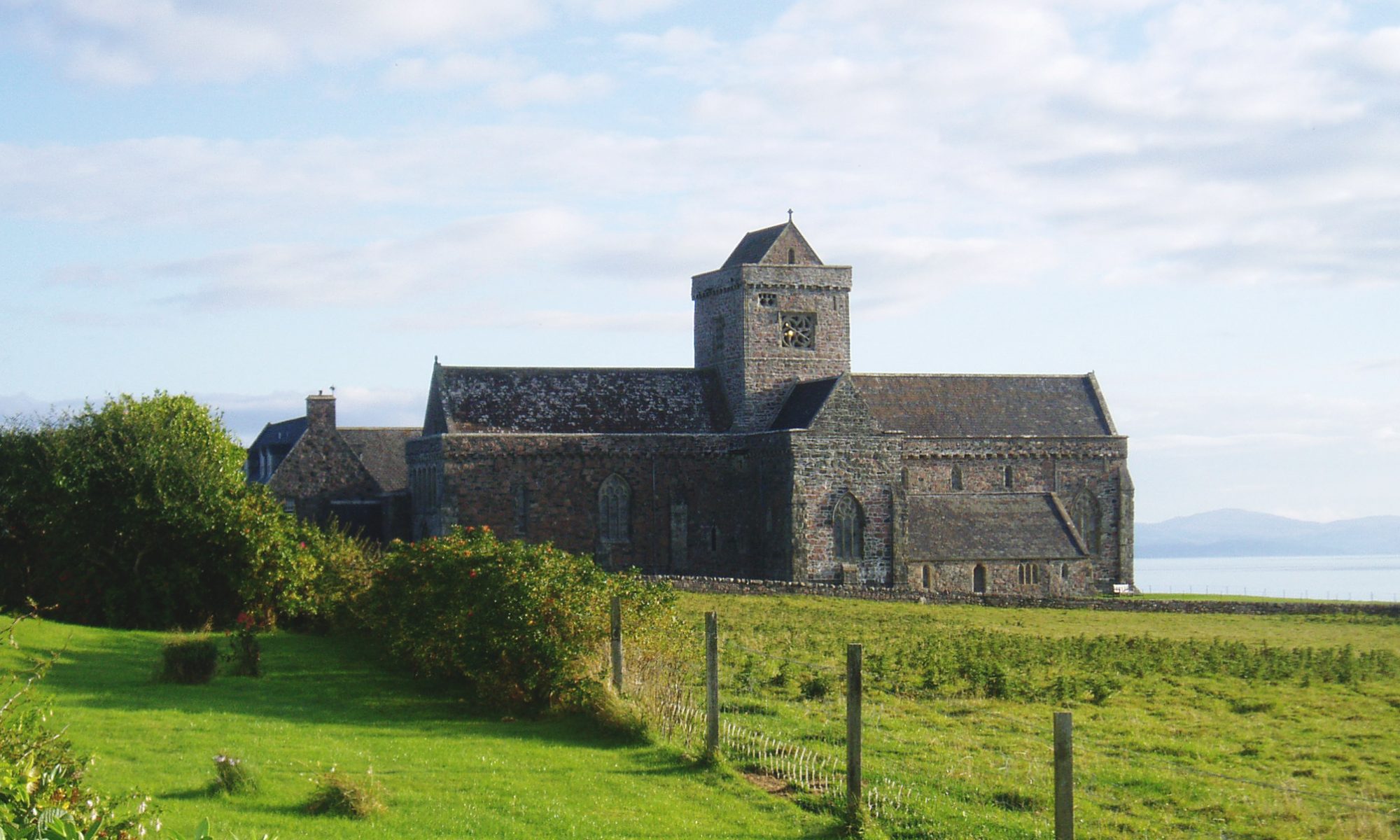In 1899 the Eighth Duke of Argyll established the Iona Cathedral Trust in connection with the Church of Scotland. Fearing that ‘buildings of such great historic interest to the whole Christian world’ might at some future point pass into unreliable hands he conveyed the Iona Abbey to the ownership of the Trust. He was hopeful that the Scottish people would endow the Trustees with funds for the necessary restoration.
The original trustees were the Moderator, Principal Clerk and Procurator of the General Assembly, the Principals of Glasgow, Aberdeen and Edinburgh Universities, the Principal of St Mary’s College St Andrews and the Ministers of St Giles’ and Glasgow Cathedrals.
The connection with the Church of Scotland reflected the Duke’s view of the Kirk as national and established, as distinct from narrowly denominational. It was his expressed wish that members of other denominations should be able to worship in a restored Abbey Church.[1] Indeed, he specifically vetoed the Iona minister being a trustee due to the then incumbent’s anti-ecumenical views.
By 1905 the chancel area was re-roofed and a grand opening service held on 14 July of that year; by 1913 the nave was re-roofed and restored, the whole church furnished and a service marking completion held on 17 July of that year.
From 1920 annual retreats for divinity students, funded by David Russell of Tullis Russell and Company, were based in the Abbey, with accommodation at the Argyll and St Columba hotels. Russell’s plans to restore the Chapter House and establish a permanent community on Iona came to nothing, but in 1929 he set up the Iona Fellowship for those who had attended retreats and wished to continue the Iona connection.
In 1935 the trustees were approached by the American Iona Society, offering to restore the remaining ruins at their own expense with a view to establishing a Celtic College. This seemed a very generous offer, but the trustees were wary. (He who pays the piper calls the tune!) They considered the proposal in December 1935 but, being aware of George MacLeod’s developing ideas for Iona, invited him also to attend the meeting. Discussions continued over the next two years during which the trustees’ preference for MacLeod’s scheme emerged. The Iona Community was formed in 1938 and Macleod resigned his charge of Govan: Old to take on its leadership.
Over ensuing years the Iona Community restored the domestic and residential buildings of the former Benedictine Abbey, thereby fulfilling an aspiration of the Duke’s 1899 Trust Deed, namely maintaining a living Christian witness on Iona.
Ownership of all the restored heritage and responsibility for its maintenance remained with the Trustees – a considerable financial undertaking. To assist with this the Trustees, in 1993, set up a company, Iona Abbey Limited, with a view to raising the necessary funds. However, despite best efforts, serious financial deficits persisted and new approaches were explored. These eventually led to the present arrangements, formally entered into on 17 September 1999, whereby Historic Scotland (now Historic Environment Scotland) would take the Abbey buildings into its care under a 175 year lease granted by the Trustees. At the same time Historic Scotland granted a sub-lease to the Iona Community enabling it to continue its Christian work and witness.
In their approach to the history of Iona Abbey, the trustees recognise that, as with many historic buildings throughout the country, there are likely to have been connections with colonialism and with the historic slave trade. There have been links between the Argyll family and historic slavery, and it is possible that some wealth derived from the slave economy was used for funding work on the Abbey in the 1870s and again in the 1890s, prior to the Abbey being gifted to the Trustees. More detail is given in the paper produced by the Trustees in April 2021.
As they seek to ensure the history of this iconic site is shown accurately and openly, the trustees are working closely with other stakeholders, the Iona Community and Historic Environment Scotland, whose approach is detailed in their Equalities Outcomes Report 2021 – 2025.
[1] The Duke used the term ‘Cathedral’ following the designation used by Charles 1 in the seventeenth century when he declared the Benedictine Abbey to be Cathedral of the Isles and ordered its repair. George MacLeod preferred the term ‘Abbey’.




